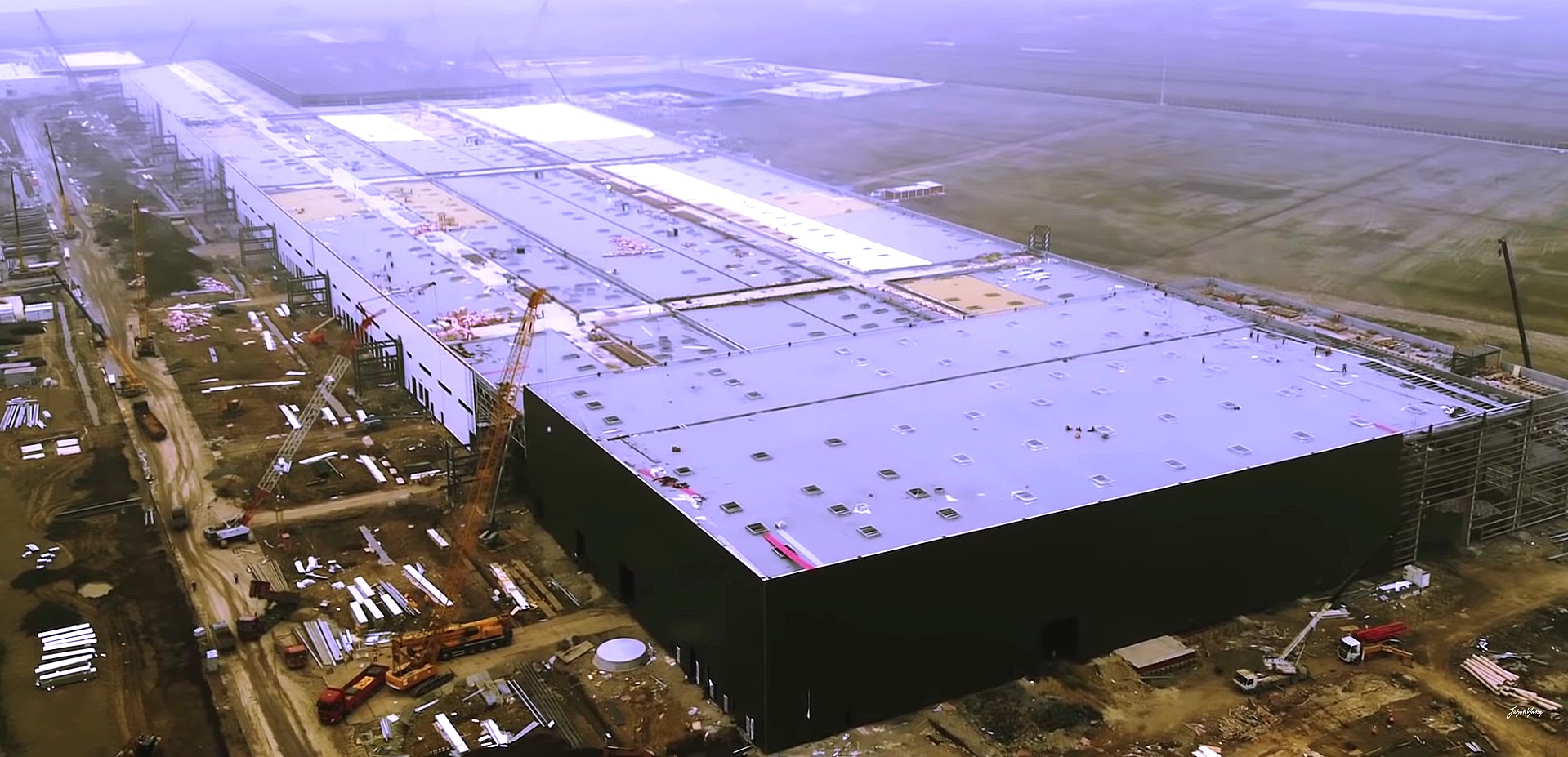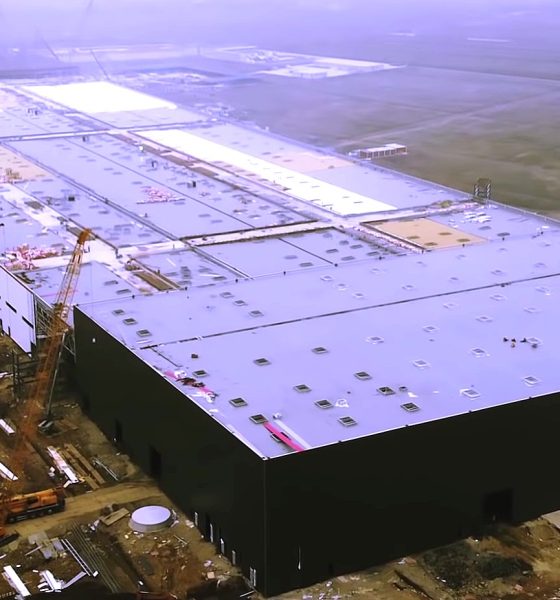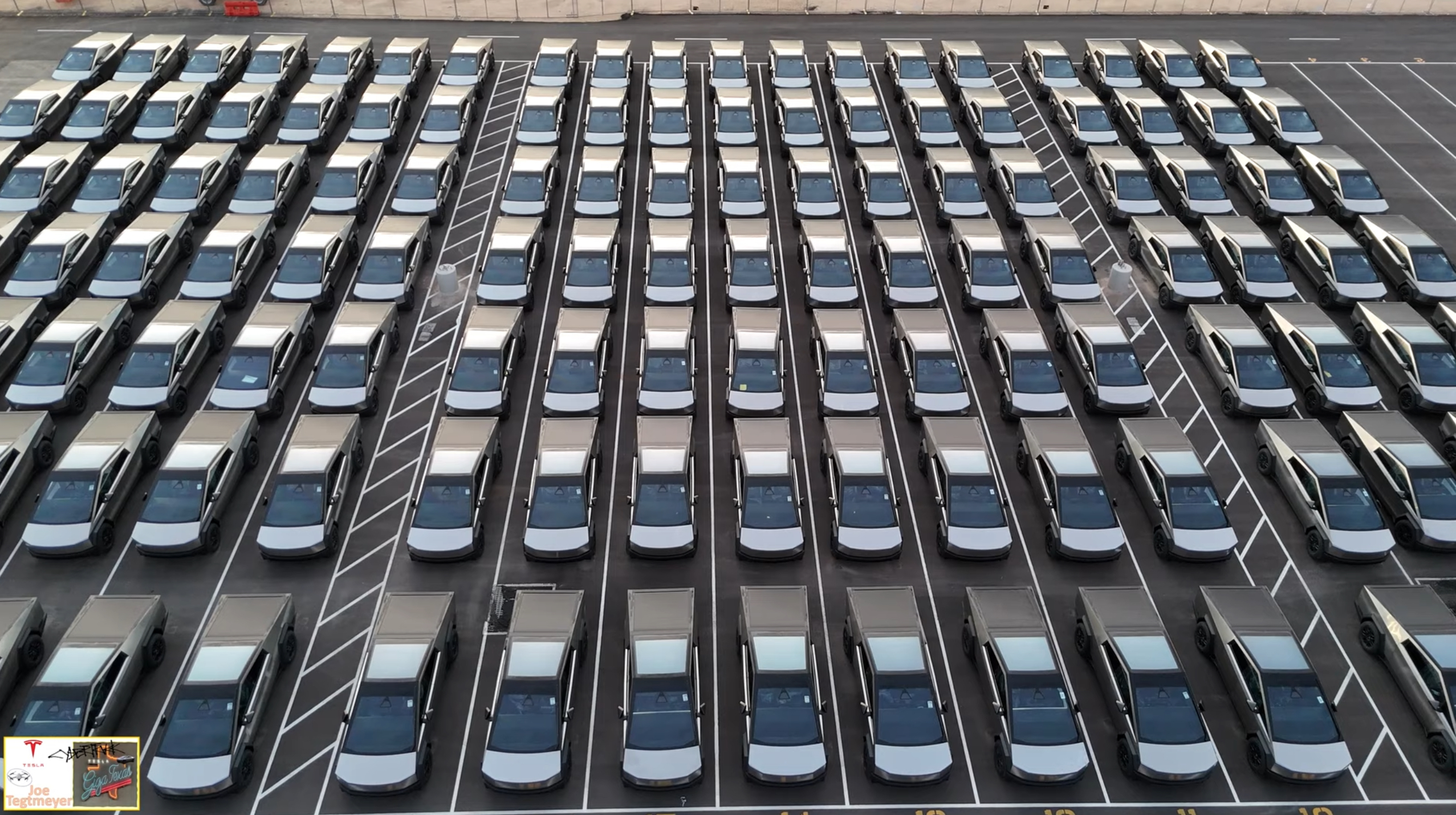

Investor's Corner
Tesla Gigafactory 3’s rise shows that it’s too early to dismiss Elon Musk’s ‘sci-fi projects’
A drone flyover of Gigafactory 3 on Monday has revealed that the factory shell of Tesla’s China-based electric car production facility is all but complete. Only a few small sections of the massive general assembly building do not have roofing yet, and the same is true for Gigafactory 3’s walls. Around the facility’s grounds, workers continued their activities, and cement trucks were seen heading inside the massive factory, hinting at the work being started inside.
Other sections of Tesla’s Gigafactory 3 complex are coming to form as well, including what appears to be dormitories for employees and a possible open-air event staging area. Outside the factory, several large trucks are loaded with massive machinery, seemingly intended for use on the 24/7 construction site. Shanghai officials have noted that Gigafactory 3’s initial construction would be done by May. Considering the progress of the buildout as of Monday, this target appears more than feasible.
The pace of Gigafactory 3’s construction is unprecedented, and it is one that will likely make it to books in the future. China itself, which holds a solid reputation for quick, surgically-precise buildouts, will probably set records with the construction of Gigafactory 3. As Tesla’s electric car factory in Shanghai rises, it is pertinent to note that there was a time, not too long ago, when the idea of Gigafactory 3’s factory shell being completed in roughly five months was considered implausible.
Just over two months ago, Gigafactory 3 was comprised of leveled ground and one steel pillar. A few months before that, it was but a muddy field. Go back a few more months and one will find Elon Musk’s initial announcement for the project’s target timeframe, where the brazen CEO estimated that Tesla would start producing electric cars in the Shanghai facility within two years from construction. During that time, Musk’s two-year timeframe was considered in the United States as “not feasible.” Convention demands car factories to be built over years, after all.
Yet here it stands now, tangible, and ahead of Elon Musk’s own target schedule. After Gigafactory 3’s shell is completed this May, the facility is set to undergo ground hardening in June. These will be followed by pipeline communication, equipment stationing, equipment commissioning, and trial production runs, which could start as early as September barring any unexpected issues. This means that by the end of the year, Gigafactory 3 might already hit some of its stride in the production of Tesla’s midsize electric sedan.
Tesla is simply not a conventional company, and neither is its projects. It’s a disruptor that has reached a critical mass — no longer small enough to be ignored, but not yet large enough to warrant unquestionable respect. This, together with Elon Musk’s persona, both in real life and online, has brought a lot of attention to Tesla. Unfortunately, most of this attention today are predominantly negative, as could be seen in the overarching narrative surrounding the company. An example of this could be seen in a recent note published by Wedbush analyst Dan Ives, where he criticized Tesla and Elon Musk for pursuing “sci-fi” projects like Full Self-Driving, an in-house insurance service, and a Robotaxi network.
Elon Musk is an optimist, and this shows when he announced target timeframes for projects like the Model 3 ramp or the release of features such as Advanced Summon. Nevertheless, Elon Musk might tend to overpromise and deliver late; but his ideas, his visions, are not implausible. They might sound like ideas that are straight out of science fiction, but he, Tesla, SpaceX, and his other ventures are hard at work making that science fiction a reality. There was a time, after all, where people thought replacing the yellow pages, or managing their money through the internet, or landing rockets on a drone ship, was an insane idea. And yet here we are.
Here’s Tesla’s Gigafactory 3 site as of Monday, May 20, 2019.
And here’s the site back in late January.

Investor's Corner
Tesla analyst realizes one big thing about the stock: deliveries are losing importance

Tesla analyst Dan Levy of Barclays realized one big thing about the stock moving into 2026: vehicle deliveries are losing importance.
As a new era of Tesla seems to be on the horizon, the concern about vehicle deliveries and annual growth seems to be fading, at least according to many investors.
Even CEO Elon Musk has implied at times that the automotive side, as a whole, will only make up a small percentage of Tesla’s total valuation, as Optimus and AI begin to shine with importance.
He said in April:
“The future of the company is fundamentally based on large-scale autonomous cars and large-scale and large volume, vast numbers of autonomous humanoid robots.”
Almost all of Tesla’s value long-term will be from AI & robots, both vehicle & humanoid
— Elon Musk (@elonmusk) September 11, 2023
Levy wrote in a note to investors that Tesla’s Q4 delivery figures “likely won’t matter for the stock.” Barclays said in the note that it expects deliveries to be “soft” for the quarter.
In years past, Tesla analysts, investors, and fans were focused on automotive growth.
Cars were truly the biggest thing the stock had to offer: Tesla was a growing automotive company with a lot of prowess in AI and software, but deliveries held the most impact, along with vehicle pricing. These types of things had huge impacts on the stock years ago.
In fact, several large swings occurred because of Tesla either beating or missing delivery estimates:
- January 3, 2022: +13.53%, record deliveries at the time
- January 3, 2023: -12.24%, missed deliveries
- July 2, 2024: +10.20%, beat delivery expectations
- October 3, 2022: -8.61%, sharp miss due to Shanghai factory shutdown
- July 2, 2020: +7.95%, topped low COVID-era expectations with sizeable beat on deliveries
It has become more apparent over the past few quarters that delivery estimates have significantly less focus from investors, who are instead looking for progress in AI, Optimus, Cybercab, and other projects.
These things are the future of the company, and although Tesla will always sell cars, the stock is more impacted by the software the vehicle is running, and not necessarily the vehicle itself.
Investor's Corner
SpaceX IPO is coming, CEO Elon Musk confirms
However, it appears Musk is ready for SpaceX to go public, as Ars Technica Senior Space Editor Eric Berger wrote an op-ed that indicated he thought SpaceX would go public soon. Musk replied, basically confirming it.

Elon Musk confirmed through a post on X that a SpaceX initial public offering (IPO) is on the way after hinting at it several times earlier this year.
It also comes one day after Bloomberg reported that SpaceX was aiming for a valuation of $1.5 trillion, adding that it wanted to raise $30 billion.
Musk has been transparent for most of the year that he wanted to try to figure out a way to get Tesla shareholders to invest in SpaceX, giving them access to the stock.
He has also recognized the issues of having a public stock, like litigation exposure, quarterly reporting pressures, and other inconveniences.
However, it appears Musk is ready for SpaceX to go public, as Ars Technica Senior Space Editor Eric Berger wrote an op-ed that indicated he thought SpaceX would go public soon.
Musk replied, basically confirming it:
As usual, Eric is accurate
— Elon Musk (@elonmusk) December 10, 2025
Berger believes the IPO would help support the need for $30 billion or more in capital needed to fund AI integration projects, such as space-based data centers and lunar satellite factories. Musk confirmed recently that SpaceX “will be doing” data centers in orbit.
AI appears to be a “key part” of SpaceX getting to Musk, Berger also wrote. When writing about whether or not Optimus is a viable project and product for the company, he says that none of that matters. Musk thinks it is, and that’s all that matters.
It seems like Musk has certainly mulled something this big for a very long time, and the idea of taking SpaceX public is not just likely; it is necessary for the company to get to Mars.
The details of when SpaceX will finally hit that public status are not known. Many of the reports that came out over the past few days indicate it would happen in 2026, so sooner rather than later.
But there are a lot of things on Musk’s plate early next year, especially with Cybercab production, the potential launch of Unsupervised Full Self-Driving, and the Roadster unveiling, all planned for Q1.
Investor's Corner
Tesla Full Self-Driving statistic impresses Wall Street firm: ‘Very close to unsupervised’
The data shows there was a significant jump in miles traveled between interventions as Tesla transitioned drivers to v14.1 back in October. The FSD Community Tracker saw a jump from 441 miles to over 9,200 miles, the most significant improvement in four years.

Tesla Full Self-Driving performance and statistics continue to impress everyone, from retail investors to Wall Street firms. However, one analyst believes Tesla’s driving suite is “very close” to achieving unsupervised self-driving.
On Tuesday, Piper Sandler analyst Alexander Potter said that Tesla’s recent launch of Full Self-Driving version 14 increased the number of miles traveled between interventions by a drastic margin, based on data compiled by a Full Self-Driving Community Tracker.
🚨 Piper Sandler reiterated its Overweight rating and $500 PT on Tesla $TSLA stock
Analyst Alexander Potter said FSD is near full autonomy and latest versions showed the largest improvement in disengagements, from 440 miles to 9,200 miles between critical interventions pic.twitter.com/u4WCLfZcA9
— TESLARATI (@Teslarati) December 9, 2025
The data shows there was a significant jump in miles traveled between interventions as Tesla transitioned drivers to v14.1 back in October. The FSD Community Tracker saw a jump from 441 miles to over 9,200 miles, the most significant improvement in four years.
Interestingly, there was a slight dip in the miles traveled between interventions with the release of v14.2. Piper Sandler said investor interest in FSD has increased.
Full Self-Driving has displayed several improvements with v14, including the introduction of Arrival Options that allow specific parking situations to be chosen by the driver prior to arriving at the destination. Owners can choose from Street Parking, Parking Garages, Parking Lots, Chargers, and Driveways.
Additionally, the overall improvements in performance from v13 have been evident through smoother operation, fewer mistakes during routine operation, and a more refined decision-making process.
Early versions of v14 exhibited stuttering and brake stabbing, but Tesla did a great job of confronting the issue and eliminating it altogether with the release of v14.2.
Tesla CEO Elon Musk also recently stated that the current v14.2 FSD suite is also less restrictive with drivers looking at their phones, which has caused some controversy within the community.
Although we tested it and found there were fewer nudges by the driver monitoring system to push eyes back to the road, we still would not recommend it due to laws and regulations.
Tesla Full Self-Driving v14.2.1 texting and driving: we tested it
With that being said, FSD is improving significantly with each larger rollout, and Musk believes the final piece of the puzzle will be unveiled with FSD v14.3, which could come later this year or early in 2026.
Piper Sandler reaffirmed its $500 price target on Tesla shares, as well as its ‘Overweight’ rating.








